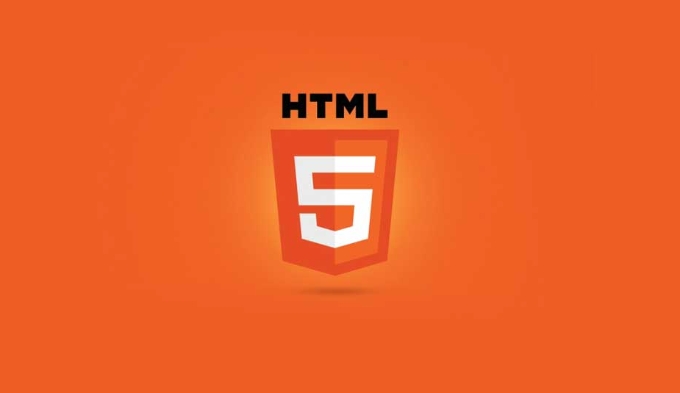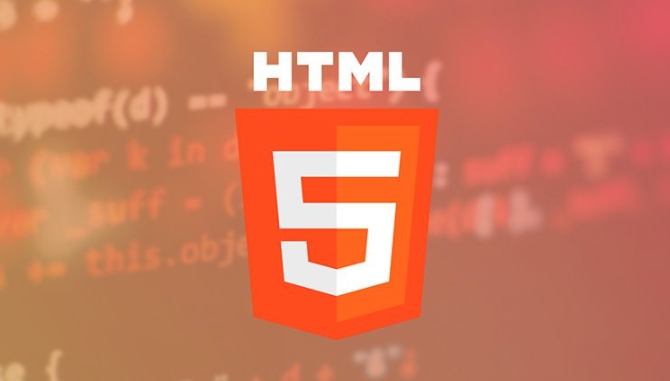Structuring content with HTML5 article, section, and aside elements.
Jul 02, 2025 pm 04:29 PMHTML5 semantic tags can improve the clarity and accessibility of web page structure. 1. Use <article> to wrap independent content, such as blog posts, to ensure that it is still meaningful to leave the page; 2. Use <section> to divide content blocks by topic, such as product introduction and function description, to avoid only use for layout; 3. <aside> is used for sidebars, comments and other supplementary information, and should not affect the main content logic; 4. Reasonably nest labels, keep the hierarchy clear, and enhance the semantic structure with tags such as header and footer. Using these tags correctly can help improve SEO and code maintainability.

When writing web content, a clear structure will not only make your page look more professional, but it will also facilitate browsers and auxiliary tools to understand content logic. HTML5 provides semantic tags like <article></article> , <section></section> and <aside></aside> to help you better organize your page content.

<article></article> is a container of independent content
When you have a piece of content that you can post separately, such as a blog post, a forum post or a news entry, it is suitable to be wrapped with <article></article> . It emphasizes "self-containable", which means that even if it is separated from the entire page, the content still makes sense.

For example:
<article> <h2>How to use HTML5 structure tags correctly</h2> <p>This article will take you through the basic usage of article, section and aside...</p> </article>
You can use <article> in nested, such as citing another small article in one main article, but most of the time one layer is enough.

<section> Segment blocks by topic
<section> is more like a chapter or content block, usually used to group relevant content on a page. It does not emphasize independence as <article> , but focuses on the division of "functionality".
For example, if your page has an "Introduction" section, a "Function Description" section, and a "User Review" section, you can wrap it in <section> separately:
<section>
<h2>Product Introduction</h2>
<p>This is a tool that helps developers build websites quickly. </p>
</section>
<section>
<h2>Main functions</h2>
<ul>
<li>Support multiple templates</li>
<li>Built-in responsive design</li>
<li>Easy to expand</li>
</ul>
</section> One thing to note is: don’t add <section> casually to set up structures. If you are just for the style layout, it is more appropriate to use <div> .
<aside> Put the sidebar or add information
<aside> is mainly used to store information related to the main content but not core, such as sidebars, comments, advertisements, recommended readings, etc. Its content is usually attached.
For example, put a term explanation box next to a technical article, you can use:
<aside> <h3>What is a semantic tag? </h3> <p>Semantic tags refer to HTML tags that can clearly express the meaning of the content, such as header, nav, main, etc. </p> </aside>
But don't abuse it. If this content is not helpful to the main line, it should be placed outside the page structure instead of using <aside></aside> .
Tips for combining use
- The hierarchical relationship should be clear : the general structure is to place multiple
<section></section>or<article></article>under, and then nest each as needed. - Pay attention to the title level : it is best to have its own title (such as h1~h6) for each
<section></section>or<article></article>to have its own title (such as h1~h6), so that the structure is more complete. - Don't over-neck : Keep it simple and avoid multi-layer nesting to make the code complicated.
- It is better to use with other semantic tags : for example,
<header></header>,<footer></footer>, and<nav></nav>. Using it together can make the page structure clearer.
Basically that's it. The semantic tags of HTML5 are used well, which not only makes the code more organized, but also improves the accessibility and SEO performance of the page.
The above is the detailed content of Structuring content with HTML5 article, section, and aside elements.. For more information, please follow other related articles on the PHP Chinese website!

Hot AI Tools

Undress AI Tool
Undress images for free

Undresser.AI Undress
AI-powered app for creating realistic nude photos

AI Clothes Remover
Online AI tool for removing clothes from photos.

Clothoff.io
AI clothes remover

Video Face Swap
Swap faces in any video effortlessly with our completely free AI face swap tool!

Hot Article

Hot Tools

Notepad++7.3.1
Easy-to-use and free code editor

SublimeText3 Chinese version
Chinese version, very easy to use

Zend Studio 13.0.1
Powerful PHP integrated development environment

Dreamweaver CS6
Visual web development tools

SublimeText3 Mac version
God-level code editing software (SublimeText3)
 Handling reconnections and errors with HTML5 Server-Sent Events.
Jul 03, 2025 am 02:28 AM
Handling reconnections and errors with HTML5 Server-Sent Events.
Jul 03, 2025 am 02:28 AM
When using HTML5SSE, the methods to deal with reconnection and errors include: 1. Understand the default reconnection mechanism. EventSource retrys 3 seconds after the connection is interrupted by default. You can customize the interval through the retry field; 2. Listen to the error event to deal with connection failure or parsing errors, distinguish error types and execute corresponding logic, such as network problems relying on automatic reconnection, server errors manually delay reconnection, and authentication failure refresh token; 3. Actively control the reconnection logic, such as manually closing and rebuilding the connection, setting the maximum number of retry times, combining navigator.onLine to judge network status to optimize the retry strategy. These measures can improve application stability and user experience.
 Integrating CSS and JavaScript effectively with HTML5 structure.
Jul 12, 2025 am 03:01 AM
Integrating CSS and JavaScript effectively with HTML5 structure.
Jul 12, 2025 am 03:01 AM
HTML5, CSS and JavaScript should be efficiently combined with semantic tags, reasonable loading order and decoupling design. 1. Use HTML5 semantic tags, such as improving structural clarity and maintainability, which is conducive to SEO and barrier-free access; 2. CSS should be placed in, use external files and split by module to avoid inline styles and delayed loading problems; 3. JavaScript is recommended to be introduced in front, and use defer or async to load asynchronously to avoid blocking rendering; 4. Reduce strong dependence between the three, drive behavior through data-* attributes and class name control status, and improve collaboration efficiency through unified naming specifications. These methods can effectively optimize page performance and collaborate with teams.
 Declaring the correct HTML5 doctype for modern pages.
Jul 03, 2025 am 02:35 AM
Declaring the correct HTML5 doctype for modern pages.
Jul 03, 2025 am 02:35 AM
Doctype is a statement that tells the browser which HTML standard to use to parse the page. Modern web pages only need to be written at the beginning of the HTML file. Its function is to ensure that the browser renders the page in standard mode rather than weird mode, and must be located on the first line, with no spaces or comments in front of it; there is only one correct way to write it, and it is not recommended to use old versions or other variants; other such as charset, viewport, etc. should be placed in part.
 Receiving real-time data with HTML5 Server-Sent Events (SSE).
Jul 02, 2025 pm 04:46 PM
Receiving real-time data with HTML5 Server-Sent Events (SSE).
Jul 02, 2025 pm 04:46 PM
Server-SentEvents (SSE) is a lightweight solution provided by HTML5 to push real-time updates to the browser. It realizes one-way communication through long HTTP connections, which is suitable for stock market, notifications and other scenarios. Create EventSource instance and listen for messages when using: consteventSource=newEventSource('/stream'); eventSource.onmessage=function(event){console.log('Received message:',event.data);}; The server needs to set Content-Type to text/event
 Improving SEO with HTML5 semantic markup and Microdata.
Jul 03, 2025 am 01:16 AM
Improving SEO with HTML5 semantic markup and Microdata.
Jul 03, 2025 am 01:16 AM
Using HTML5 semantic tags and Microdata can improve SEO because it helps search engines better understand page structure and content meaning. 1. Use HTML5 semantic tags such as,,,, and to clarify the function of page blocks, which helps search engines establish a more accurate page model; 2. Add Microdata structured data to mark specific content, such as article author, release date, product price, etc., so that search engines can identify information types and use them for display of rich media summary; 3. Pay attention to the correct use of tags to avoid confusion, avoid duplicate tags, test the effectiveness of structured data, regularly update to adapt to changes in schema.org, and combine with other SEO means to optimize for long-term.
 Explaining the HTML5 `` vs `` elements.
Jul 12, 2025 am 03:09 AM
Explaining the HTML5 `` vs `` elements.
Jul 12, 2025 am 03:09 AM
It is a block-level element, suitable for layout; it is an inline element, suitable for wrapping text content. 1. Exclusively occupy a line, width, height and margins can be set, which are often used in structural layout; 2. No line breaks, the size is determined by the content, and is suitable for local text styles or dynamic operations; 3. When choosing, it should be judged based on whether the content needs independent space; 4. It cannot be nested and is not suitable for layout; 5. Priority is given to the use of semantic labels to improve structural clarity and accessibility.
 Getting the user's current location with the HTML5 Geolocation API.
Jul 02, 2025 pm 05:03 PM
Getting the user's current location with the HTML5 Geolocation API.
Jul 02, 2025 pm 05:03 PM
When using HTML5Geolocation API to obtain user location, you must first obtain user authorization, and request and explain the purpose at the right time; the basic method is navigator.geolocation.getCurrentPosition(), which contains successful callbacks, wrong callbacks and configuration parameters; common reasons for failure include permission denied, browser not supported, network problems, etc., alternative solutions and clear prompts should be provided. The specific suggestions are as follows: 1. Request permissions when the user operation is triggered, such as clicking the button; 2. Use enableHighAccuracy, timeout, maximumAge and other parameters to optimize the positioning effect; 3. Error handling should distinguish between different errors
 Understanding HTML5 Media Source Extensions (MSE)
Jul 08, 2025 am 02:31 AM
Understanding HTML5 Media Source Extensions (MSE)
Jul 08, 2025 am 02:31 AM
MSE (MediaSourceExtensions) is part of the W3C standard, allowing JavaScript to dynamically build media streams, thus enabling advanced video playback capabilities. It manages media sources through MediaSource, stores data from SourceBuffer, and represents the buffering time range through TimeRanges, allowing the browser to dynamically load and decode video clips. The process of using MSE includes: ① Create a MediaSource instance; ② Bind it to an element; ③ Add SourceBuffer to receive data in a specific format; ④ Get segmented data through fetch() and append it to the buffer. Common precautions include: ① Format compatibility issues; ② Time stamp pair






